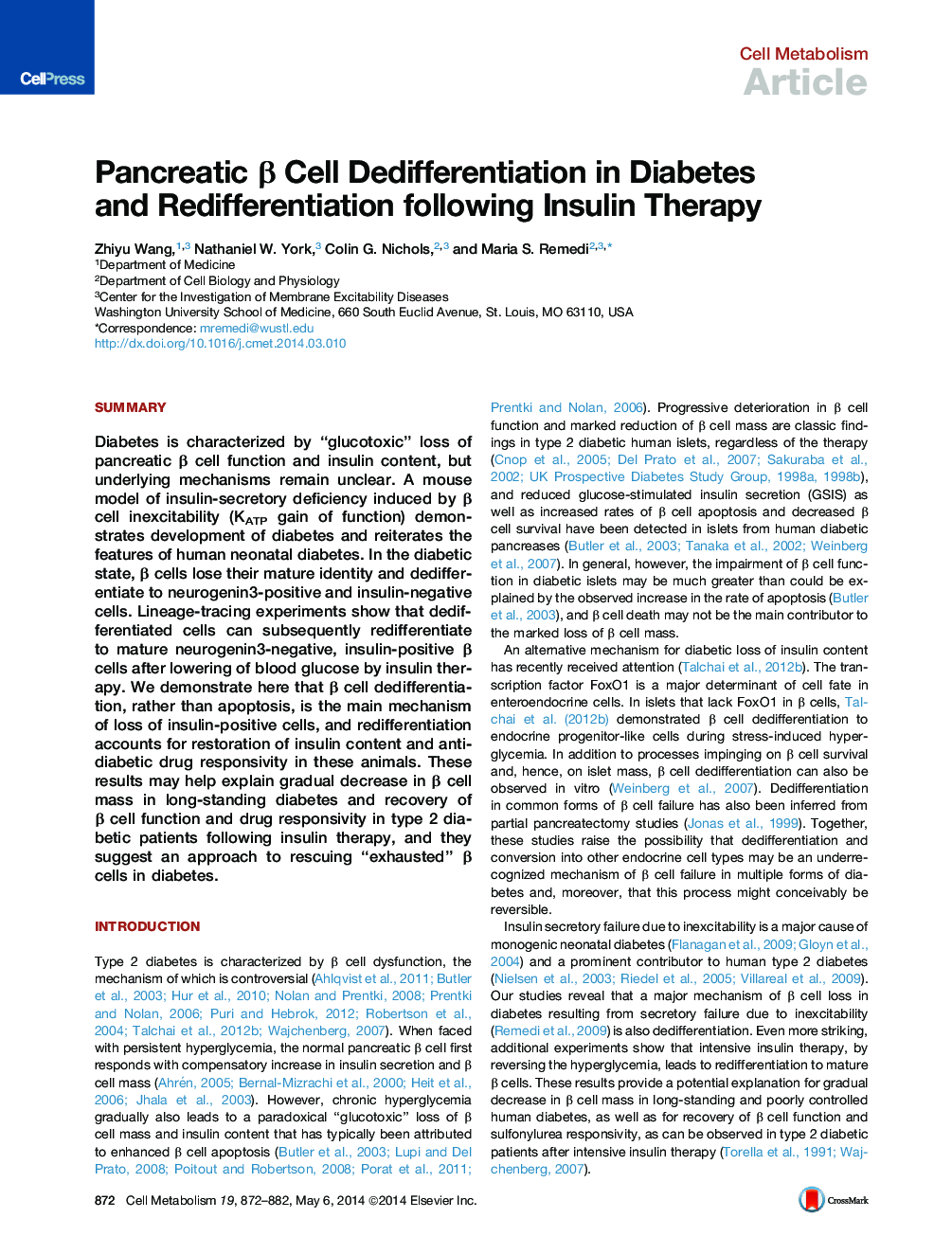| کد مقاله | کد نشریه | سال انتشار | مقاله انگلیسی | نسخه تمام متن |
|---|---|---|---|---|
| 2792649 | 1155069 | 2014 | 11 صفحه PDF | دانلود رایگان |

• Loss of pancreatic β cell insulin content in long-standing glucotoxic diabetes
• β cell dedifferentiation to neurogenin3-positive/insulin-negative cells in diabetes
• Redifferentiation to insulin-positive β cells after normalization of blood glucose
SummaryDiabetes is characterized by “glucotoxic” loss of pancreatic β cell function and insulin content, but underlying mechanisms remain unclear. A mouse model of insulin-secretory deficiency induced by β cell inexcitability (KATP gain of function) demonstrates development of diabetes and reiterates the features of human neonatal diabetes. In the diabetic state, β cells lose their mature identity and dedifferentiate to neurogenin3-positive and insulin-negative cells. Lineage-tracing experiments show that dedifferentiated cells can subsequently redifferentiate to mature neurogenin3-negative, insulin-positive β cells after lowering of blood glucose by insulin therapy. We demonstrate here that β cell dedifferentiation, rather than apoptosis, is the main mechanism of loss of insulin-positive cells, and redifferentiation accounts for restoration of insulin content and antidiabetic drug responsivity in these animals. These results may help explain gradual decrease in β cell mass in long-standing diabetes and recovery of β cell function and drug responsivity in type 2 diabetic patients following insulin therapy, and they suggest an approach to rescuing “exhausted” β cells in diabetes.
Graphical AbstractFigure optionsDownload high-quality image (264 K)Download as PowerPoint slide
Journal: - Volume 19, Issue 5, 6 May 2014, Pages 872–882